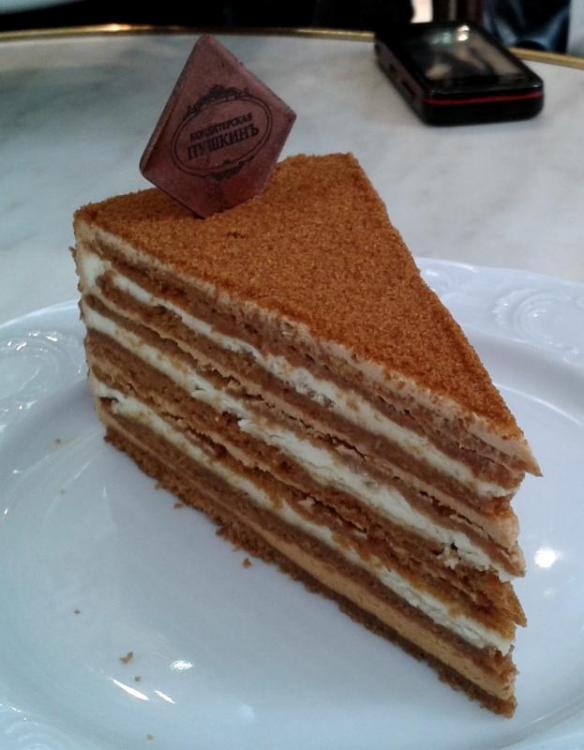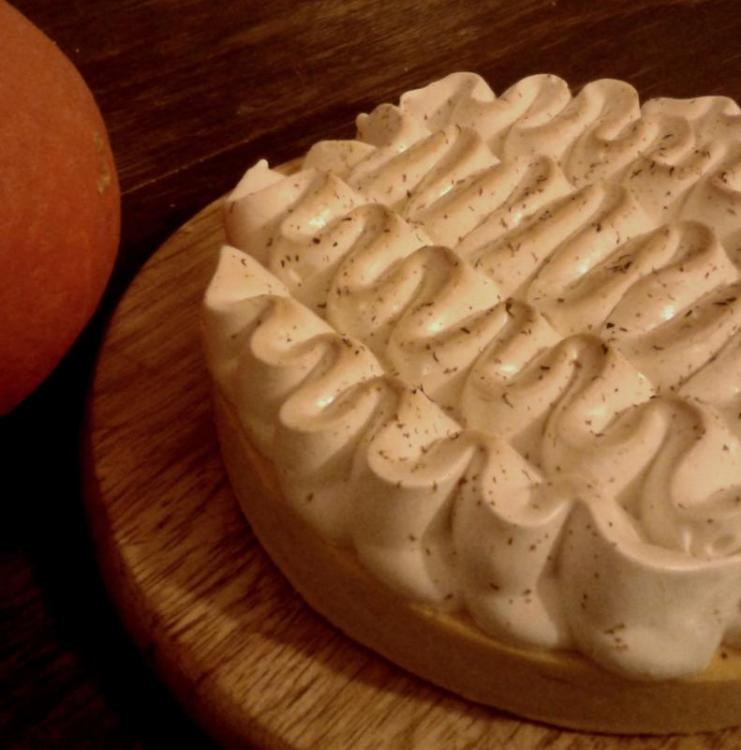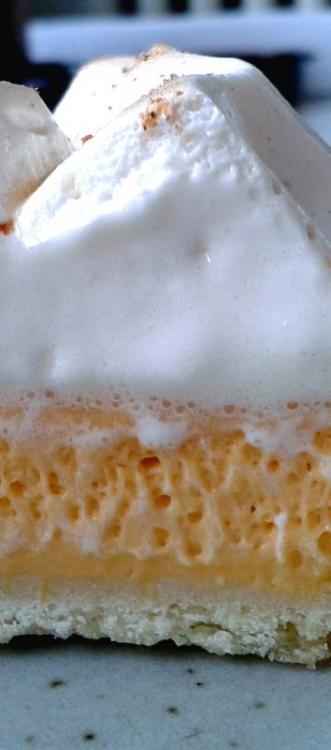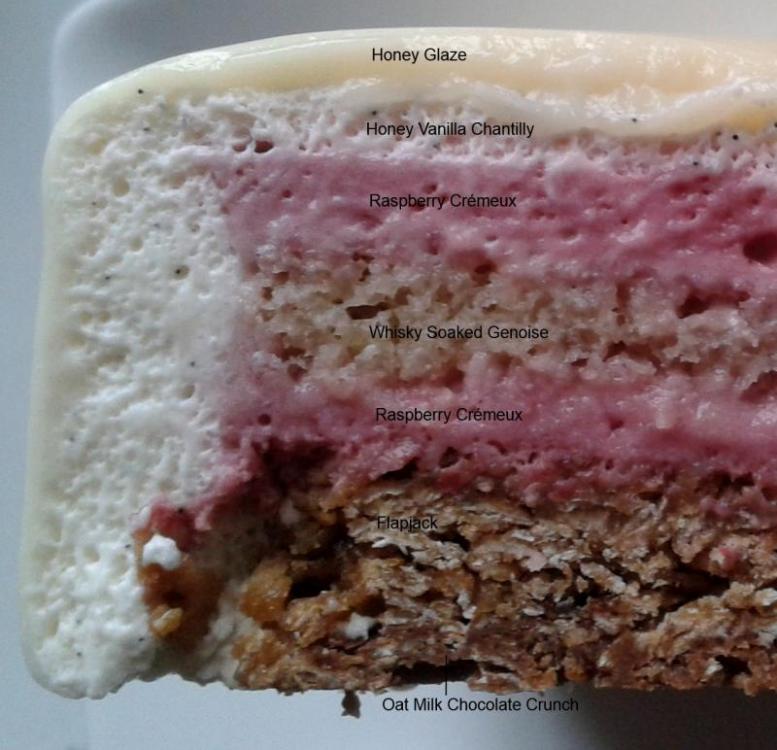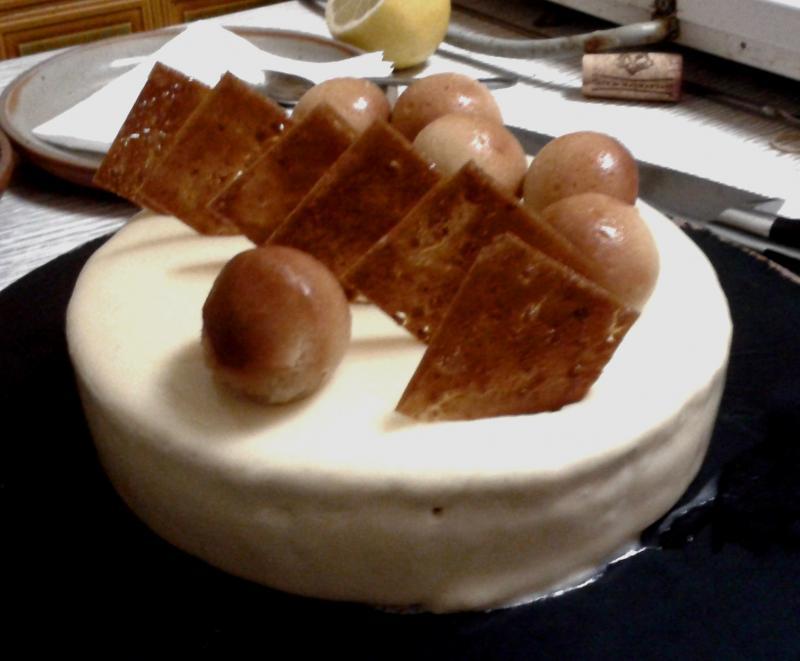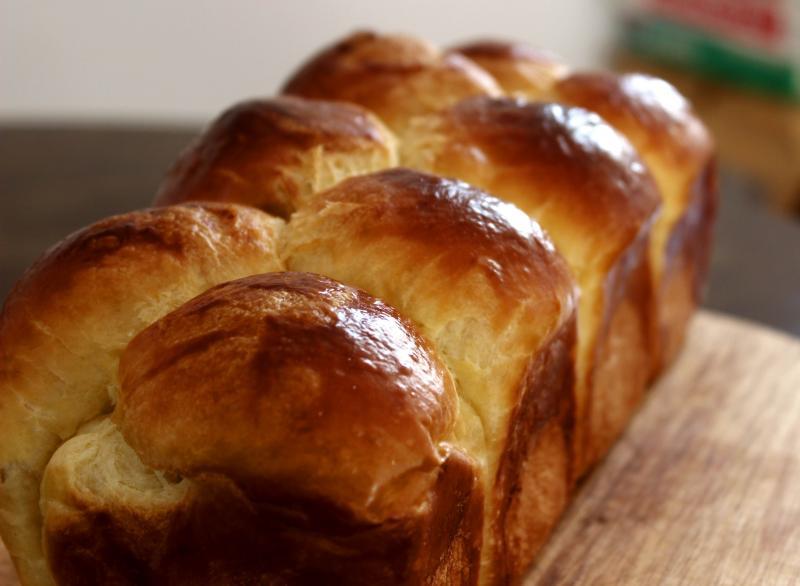-
Posts
838 -
Joined
-
Last visited
Content Type
Profiles
Forums
Store
Help Articles
Everything posted by jmacnaughtan
-
djyee, thanks for the translation. I could just about get by reading the Italian, but Czech is beyond me. Diana, I'd love to see your recipe. Could you post or PM it?
-
Thanks for that, it looks like an interesting recipe. As an aside, I've never seen a filling made like that before. What is cream of wheat? I take it it works like cornstarch in a crème patissière? Katie, thanks for the medovnik tip, I'll have a look at those. I'll start trials for the Medov(n)ik tomorrow, and post back with the results.
-
Wow, thanks a lot for those links. I looked at a few of them the first time around, but I was put off by the cookie dough layers. It seems like that's the way to go! You're right, it's a buckwheat honey "biscuit" - miel de sarraisin refers to the honey, but "biscuit" can mean anything from a hard cookie to a sponge cake. I have to say that I'm not convinced about the filling- just using sweetened crème fraïche or soured cream doesn't sound like it'll hold up too well, and the same for the condensed milk layers. However, I'll follow the recipe exactly - but with smaller quantities - and see how it comes out. I've got some time to experiment before the party, and none of the ingredients are very expensive. I'll post back with the results.
-
Hi, I've been asked to make a Medovik cake for an upcoming Russian dinner party. I've eaten it before, it's a multi-layered honey cake with a sort of dulce de leche/sour cream flavor filling. This is Café Pouchkine's version: It's a wonderful cake. I think they separate the dulce de leche and sour cream into two different fillings, and use a strongly flavored honey cake that I think has been soaked. However, I've been browsing Google English, French, and as much Russian as I can understand, and all the recipes vary wildly, with most of them making a strange sort of cookie for the cake layer. I'd be willing to give this a go, but I'd rather have something moister and more delicate. So my question is: does anyone have any experience with this cake? Failing that, can anyone provide a good honey cake recipe that could be used for the layers or a filling that's strong enough to support itself and has a good honey/dulce de leche/sour cream flavor? I'll do a couple of test runs before the real thing, but all suggestions are welcome. Thanks, James
-

Your Daily Sweets: What are you making and baking? (2012–2014)
jmacnaughtan replied to a topic in Pastry & Baking
Interesting, I thought this sort of flapjack was an American invention. It's just a very simple oat cookie made from rolled oats, golden syrup, butter and muscovado sugar. This is the first time I've used it as anything other than a petit four, though. Here's a recipe that's not too far off the one I used. Did you not once make a V8 entremet with 8 different layers featuring vanilla? Either way, this one looks fantastic as well. Can you recommend a good book focusing on entremets? I noticed you sometimes reference Philippe Conticini's Sensations. Haha, yes, that was a challenge. I saw that on Masterchef Australia and had to try it... For books with good entremet techniques and recipes, I like Francisco Migoya's "the Modern Café" and "Elements of Dessert" (although I find several of his recipes flawed, the technique is good), and Conticini's "Sensations" is a wonderful book. So many great techniques, flavors and preparations. I think it's only available in French, though. There are a couple of good entremets in Adriano Zumbo's "Zumbo", including the V8, but I'm not convinced it's worth shelling out 30€ for. I find that entremets are technically easier than many "home-cooking" layer cakes. If you have a couple of metal cake rings, a freezer and a few basic recipes to adapt, it's feasible to make a professional looking cake at home. I know I'll never have the technical skill to pull off a perfect buttercream-coated cake, my spatula skills are just too weak. -

Your Daily Sweets: What are you making and baking? (2012–2014)
jmacnaughtan replied to a topic in Pastry & Baking
You are extremely talented. I saw your pumpkin pie recipe, WOW! Thanks, you're very kind. I love doing the more elaborate entremets and preparations. Especially when serving specialties like haggis to non-British diners, you really need something memorable for dessert -
Originally posted here, this is a take on the classic. Sweet pastry, butternut crémeux and golden syrup spiced meringue. You can use any other squash, essentially any other fruit purée for the crémeux, and it freezes well, as does the pastry dough. Makes one 18cm tart. Sweet pastry Flour, 100gButter, 50gEgg yolks, 30gIcing sugar, 17gMilk (lukewarm), 8gSalt, 2g1. Sift flour onto a large piece of greaseproof paper. 2. Warm butter until very soft (almost liquid, but without breaking the emulsion). 3. Whip butter until white. 4. In a separate bowl, combine egg yolks and icing sugar. Whip until pale and creamy. 5. Incorporate milk and salt. 6. Pour the egg mixture into the whipped butter, and whisk to fully combine. Scrape the bottom of the bowl to ensure everything is homogenous. 7. Pour the sifted flour into the butter mixture. 8. Mix with a wooden spoon (or mixer paddle) until fully combined. Scrape the bottom of the bowl again. 9. Scrape onto cling film, wrap, press flat and refrigerate for at least one hour, preferably overnight. 10. Roll out to the thickness of a £1 coin (2mm). 11. Cut a circle around 2cm larger than your tart circle/tin in the pastry. 12. Line the tin, ensuring you've pushed the dough into the bottom edge all the way round (to avoid the sides collapsing in the oven). Refrigerate for 20 minutes. 13. Preheat the oven to 180°C. 14. Remove the dough from the fridge and trim the edges with a paring knife. Prick the base with a fork. 15. Bake for 12-18 minutes, until lightly golden. Leave to cool before unmolding. Butternut crémeux Butternut purée, 250gCaster sugar, 30 + 30gCornflour, 15gEgg yolks, 60gMilk, 20 gGelatin, bloomed, 1.5g (dry weight)Butter, 100gHeat the purée with 30g of sugar in a fairly large saucepan. Mix the remaining sugar with the cornstarch, and add the cold milk. Mix well. Incorporate the egg yolks. Temper the purée into the egg mixture, pour back into the pan and bring to the boil. Don't stop stirring or it will catch and burn. Keep at the boil for around thirty seconds. Take it off the heat, let it cool for a minute or two, and while still warm incorporate the gelatin. Cool to around 40-50°C (it shouldn't burn your finger, but it should feel warm). Using a stick blender/food processor, incorporate the cold butter, cut into cubes. Leave to cool completely in the fridge, preferably overnight. Before using, whip to aerate it. It will turn pale and fairly fluffy. Fill the tart shell, and level the top. Refrigerate while you make the meringue.Spiced meringue Sugar, 100gGolden syrup, 100gWater, 70gEgg whites, 100gTonka bean, cinnamon, nutmegCombine sugar, syrup and water in a small saucepan. Bring to the boil and cook to 118-121°C. (Alternatively, if you don't have a thermometer, make it as a Swiss meringue. Omit the water, combine sugar, syrup and egg whites and heat over a water bath until it's just too hot for your finger, then whip until cool) When the sugar is at around 114°C, start whipping the egg whites. Once the sugar has reached 118-121°C, pour gently into the whipping whites. Whip until cool. Grate some spice into the meringue, and mix more. Pipe or spread onto the tart. Grate on a little more spice. Blast under the grill or with a blowtorch. Cover with a cloche or a bowl to capture the aroma. Serve at room temperature.
-
- 7
-

-

Your Daily Sweets: What are you making and baking? (2012–2014)
jmacnaughtan replied to a topic in Pastry & Baking
I just saw this and it looks amazing. Any chance I could get a recipe, please? Thanks, I'll put it up on recipegullet when I get the chance. -

Your Daily Sweets: What are you making and baking? (2012–2014)
jmacnaughtan replied to a topic in Pastry & Baking
For Burns night, a slightly updated Cranachan. From top to bottom: Oatmeal tuiles Whisky mini babas Honey glaze Honey vanilla Chantilly Raspberry crémeux Whisky-soaked genoise Flapjack Oatmeal milk chocolate crunch. Goes down nicely with a dram -

Tried substituting applesauce for oil in cupcakes
jmacnaughtan replied to a topic in Pastry & Baking
If you really want a fat-free, apple-flavored cupcake, you might be better off scrapping the recipe and using a fat-free Genoise soaked with apple syrup. Guaranteed rise, guaranteed moistness, guaranteed apple flavor (especially if you add a hit of Calvados to the syrup, and maybe cinnamon to the batter) and no worries about acidity or leavening. Just a thought. Then you can pile on the fat with the buttercream icing. -
Any of your high-alcohol ones would work well. I'd go for the Triple Sec or the brandy: Triple Sec will boost the orange and brandy is a very underused booze. Avoid the advocaat, unless you want to use it for dipping. And most definitely put some booze in the soaking syrup.
-
I haven't tried walnut, but there's a recipe for it in Philippe Conticini's "Sensations", using 6:4 walnut/sugar. I'll give it a shot when I next get some walnuts. Peanuts work great as a praline, especially if you use the roasted salted ones
-

Tried substituting applesauce for oil in cupcakes
jmacnaughtan replied to a topic in Pastry & Baking
I'd recommend using butter, and just not eating as many of them. Low fat cake recipes tend to fail miserably, at least when I do them. -

Your Daily Sweets: What are you making and baking? (2012–2014)
jmacnaughtan replied to a topic in Pastry & Baking
It makes a nice effect, very organic. I saw something similar here:http://www.playingwithfireandwater.com/foodplay/2008/10/black-forest.html -

Your Daily Sweets: What are you making and baking? (2012–2014)
jmacnaughtan replied to a topic in Pastry & Baking
Nice work, DianaM. What's the decoration on top of the baptism cake? -
You could add gold or silver dust to some finely chopped nuts, toss them in it to coat, then fold that through the batter. The dust tends to stick to nuts very well, and you'd have more visible "glitter" in your cake.
-
Are you making a layered cake, a single block or an entremet? If it's an entremet, you could just add edible glitter to the mousse or inserts, and if it's layered to the buttercream or ganache. I'm not sure how well it stands up to heat though, so a monolithic cake might be a problem.
-
I asked and was told that it was a truly wild one. Judging by the blood on its neck, I imagine it was trapped rather than shot, but I could be wrong about this. It spent maybe half an hour with me in the metro before I got home, then it was in the fridge until the evening, maybe around 7 hours. After re-rinsing, searing and slow-cooking, the smell almost completely disappeared. I took a chance and tried it, it tasted OK, so I think it must have been the offal that was causing the stink. Even though I'd normally use rabbit liver and kidneys, I chickened out of using these ones. Although, after all that, I'm not sure wild rabbit is any tastier than farmed- it didn't seem to taste much different, and was just tougher. Maybe I'll try hare or boar next time.
-
The liver looked fine, so did all the flesh- no spots, no discoloration, just the smell. I think it may have been the bile gland. I've rinsed and salted it, and once the legs/shoulders/loin came off the body (and the rest hastily thrown away) and rinsed again, the smell pretty much dissipated. Here in France, you have to have a special government permit to sell wild game, so I imagine the butcher was certified. I've bought a fair amount of game from him before, so I consider him fairly trustworthy. That's interesting: all the game birds I've seen around here aren't dressed at all before sale, just at the last minute. They pluck and gut them to order. I thought that when you prepared game, you hung it undressed?
-
Evening everyone, Does anyone have any experience cooking with wild rabbit? I picked up my very first today from the market, watched it get skinned and gutted and didn't notice any real odour. Bringing it back and opening the bag, I got hit with a smell that literally made me recoil. It smelled even worse than the really pungent andouillettes. It was truly awful. Is this normal for game? I've heard of the "gamey" smell, but this was closer to a toilet. After rinsing and getting rid of the liver it improved, but I'd like to know the difference between gamey and just plain bad. I've never had this sort of smell from game birds, so maybe it's just a rabbit thing? Thanks, James
-
It depends how long you're going to leave them out for. Just put them over a bain marie for a couple of minutes, whisking occasionally until you can't feel a chill when you dip your finger in. If you don't want to do that, just cover it with cling film and leave to come to room temperature. Most baking techniques will take the temperature up to around 80-90°C anyway, easily enough to kill salmonella. And for keeping eggs in the fridge or not, it's definitely better to do so. It's not essential, but it'll keep them fresher for longer and will reduce evaporation from the white. Also, they take up less counter space and are less likely to be broken by clumsy cooks (myself included).
-

Your Daily Sweets: What are you making and baking? (2012–2014)
jmacnaughtan replied to a topic in Pastry & Baking
Just bought a new stand mixer, and I'm putting it through its paces with brioche dough. Works pretty well, makes good dough that even my crappy miniature oven can't screw up. A classic, the brioche Nanterre: -
Egg wash them twice to make them look better and stop the layers separating in the oven. I don't think it's necessary to reduce the butter content that much: I've always had good results with 31%. The problem might be your folds. 2 x 5 folds might make the dough too thin, maybe try the standard 3 x 3?
-
Sounds like you're proving them too fast. Give them two long, slow proofs - one for the un-folded dough, one for the finished croissant - and they'll hold their shape better. It's a good idea to egg-wash them twice as well, just after rolling and just before baking.
-
That's a horrible recipe to follow, and pretty badly translated... You could probably divide the glaze recipe by 4 or 5 and still have plenty for the recipe. I'd be wary of the amount of gelatin used with the pears too- for 45g of gelatin preparation, you'll normally have around 8g of dry gelatin, enough to turn your pears into a block of rubber.


